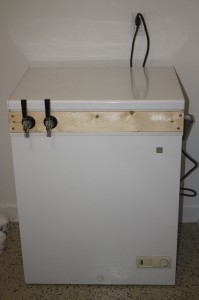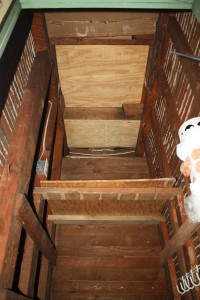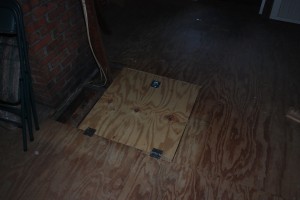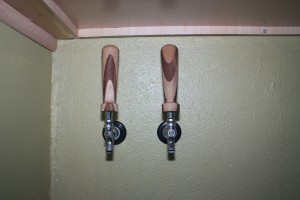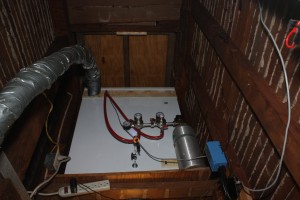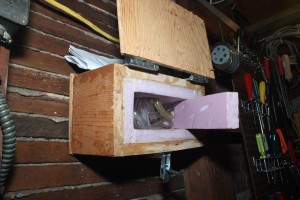A few years ago I built a kegerator out of a small chest freezer I purchased for about $80 on Craigslist. It was installed in our kitchen and worked well but the taps were a little low and the freezer took up too much space.
Most houses in Durham do not have basements, only crawlspaces but our house and several others on our street in Old North Durham have partial basements. They usually have their access stairwell coming from outside the house but fairly early in the history of our house the owner moved the stairwell inside with access from our main hallway. The stairwell is behind the fridge and chimney but there was about a three foot section that was right behind some counter space, perfect location for installing beer taps. The first thought was to install the kegerator in the basement but after reading many online forums the issue with placing your kegerator a floor below your serving location is you need to crank up the CO2 pressure in order to achieve a good serving pressure. This results in over-carbonated beer. There was plenty of headroom in the stairwell which was largely unusable space. I built a platform for the kegerator to sit on.
I cut a hole in the ceiling of the stairwell that would open into the attic space and built a trapdoor for the hole.
I removed the hinges from the top cover of the kegerator since there would be room for the lid to open up but instead would need to be slid off and carefully lowered it down from the attic onto the platform. Holes were cut into the plaster wall in the kitchen and taps installed.
A small box to cover the back of the tap shanks was built. Flex pipe was used to connect the kegerator to the box and the individual serving lines were run inside the flex pipe. Insulation was wrapped around the flex pipe and styrofoam insulation glued and inserted into the box.
So far the setup has been working quite well. The beer does warm up in the lines so if you haven’t poured a beer in a while the CO2 comes out of suspension and form a pocket at the top of the line. This will result in a foamy first pour and sometime a small pop as the gas is forced out of the taps but on average only accounts for less than an ounce of foamy beer that I typically pour out before returning to the tap to fill the glass.





